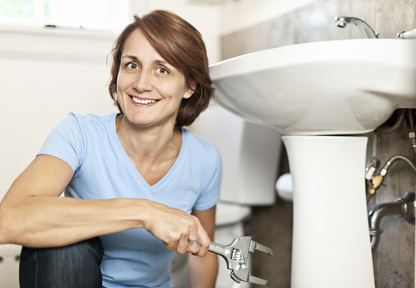How to avoid a Water Damaged Bathroom
How to avoid a Water Damaged Bathroom
Blog Article
Have you been trying to find content around Common Causes of Water Damage in a Bathroom?

The shower room is extremely prone for moist build-up and also potential water damages as a result of the frequent use of water in it. This post offers easy assessment strategies to help discovering water damages hazards.
The frequent use water in the washroom makes it extremely susceptible for damp buildup and also potential water damage. By checking it consistently, you can reduce water relevant problems.
The adhering to collection of assessments is simple to carry out and should be done once in every 3 months in order to maintain your shower room in good shape and to prevent possible water problems triggered by the bathtub, the shower, pipe joints and also plumbing, sinks, closets, as well as the bathroom
Do not overlook performing these examinations and be detailed while executing them. Bear in mind that these easy inspections can conserve you a great deal of money by providing very early signs for water damage
Sinks and Cabinets
Sinks and also cupboards are exposed to moisture and also humidity daily and also are commonly neglected. Inspect consistently under the sink as well as on the countertop over it. Fix any drip in the catch as it may suggest drainpipe issues. Look around the sink, sluggish draining pipes might suggest a blocked drainpipe. Replace sink seals if they are fractured or loose.
Bathtub as well as Shower
The shower and bath tub need unique interest and upkeep. Check the floor tiles and change if broken. See to it that there is no missing cement between the tiles. Check and change fractured caulking at joints where the wall surfaces meet the flooring or the bath tub. Blocked drains and also pipelines problems will certainly stop the tub from drying and also may show serious issues beneath the tub. Seek advice from an expert quickly to avoid architectural damage. Focus on stainings or soft areas around the bath tub wall surfaces as they might indicate an interior leak.
Plumbing
Signs for water damages are difficult to detect considering that most pipelines are mounted inside the walls.
Pay unique attention to floor covering and walls dampness and spots as they might indicate an unseen plumbing problem. Inspect dampness levels in adjacent rooms also.
The Commode
The toilet is a prone water joint. Inspect the water lines and also search for leaks around the commode seat, in the hose, as well as under the water container. If you detect any type of indicators of moisture on the floor around the commode, check for leaks in the toilet edge and also tank seals.
Understand that hanging commode bowl deodorants boosts the opportunities for clogs.
TIPS TO PREVENT WATER DAMAGE IN THE BATHROOM
The average household uses approximately 80-100 gallons of water per person per day. For a family of 4, that's almost 2,500 gallons of water a week! The largest portion of this consumption comes from bathroom use. Flushing the toilet uses the most water, followed by taking a shower or bath. With that much water running through the home, water damage in the bathroom is bound to happen. Knowing how to spot signs of a water leak is essential to preventing long-term damage. This guide provides you with tips to reduce the impact of water damage on your bathroom.
CAUSES OF BATHROOM WATER DAMAGE
Pipe breaks are the most common cause of water damage we see in our daily jobs. The age of a pipe plays a large role in a pipe break as well as corrosion. Over time, the metal begins to break down, allowing water to escape. Frozen pipe breaks are also a concern in the winter months. Toilet overflows caused by paper products or children flushing inappropriate items. Degraded caulking around the toilet or bathtub can allow water seepage, sometimes behind the fixture, into the subfloor or walls. Condensation forms when the water in a pipe is cooler than the air temperature. Beads of water form on the exterior of the pipes, sometimes so much so that the water begins to drip and pool below. Sink or shower backups created by poor drainage. HOW TO PREVENT WATER DAMAGE IN YOUR BATHROOM
Inspect your toilet supply line for worn or frayed hoses and replace them as needed. Winterize your plumbing to prevent a frozen pipe break. Use vent fans to prevent condensation that can lead to mold growth. Routinely check and replace degraded caulking around your toilet or bathtub. Increase the temperature in your toilet tank and insulate your pipes during the warm summer months to keep condensation from forming. Use child safety locks on the toilets. Flush only toilet paper. "Flushable" wet wipes are actually not good for your plumbing system. Additionally, feminine hygiene products should not be flushed. Prevent water from escaping the tub or shower. Make sure shower curtains are in good condition. Inspect shower doors and replace the seal strip if necessary. Wipe up any water that accumulates on the floor and use bath mats. Water left to sit can cause damage to the tiles and flooring. Refrain from using bath products containing heavy oils to avoid a clogged drain.

We hope you enjoyed our post on Looking for Signs of Water Damage in the Bathroom. Many thanks for taking a few minutes to browse our blog post. In case you enjoyed reading our page please be sure to share it. I truly appreciate reading our article about Preventing Water Damage in the Bathroom.
Information Report this page